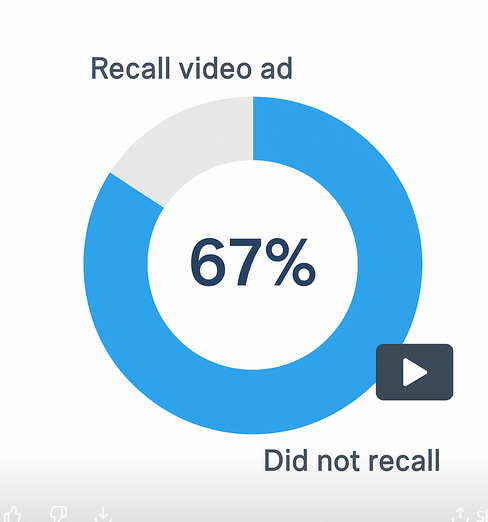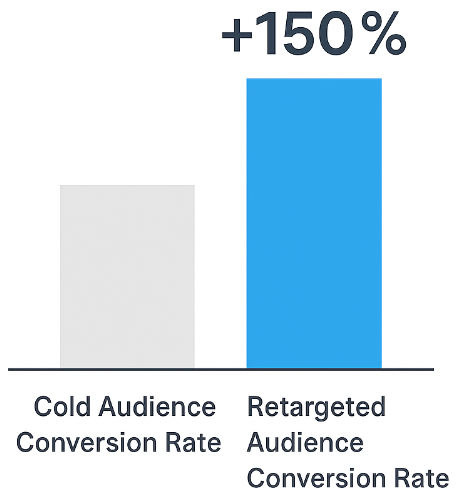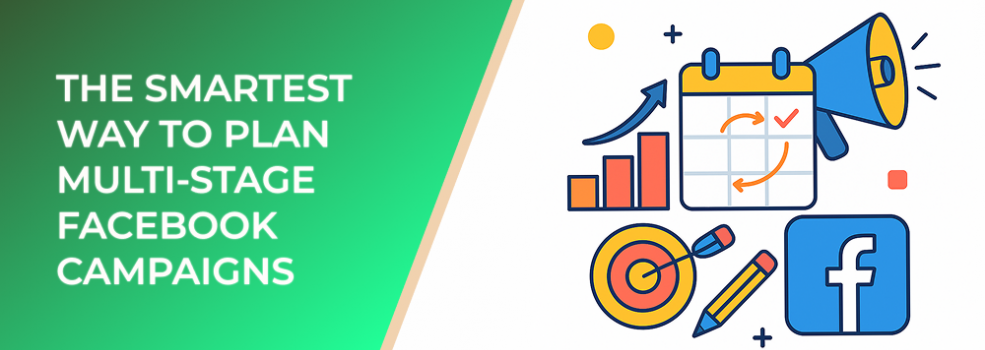Modern advertising requires sequencing. A single ad rarely converts cold audiences, but a structured, multi-stage system warms prospects, nurtures intent, and closes the sale methodically. According to industry benchmarks, well-structured funnel campaigns can reduce cost per conversion by up to 30 percent, while retargeting ads often deliver 3–10 times higher ROI than cold traffic.
Stage 1: Awareness – Reaching the Right People
The purpose of the Awareness stage is to generate attention and introduce your offer to users who have never interacted with your brand. During this stage, broad but relevant targeting and impactful creatives matter most.

Over two-thirds of people remember a video ad seen online within the past week
Useful statistic: Video-based awareness ads can increase brand recall by more than 50 percent, making them a strong starting format.
Key Actions
-
Use visually strong, concise creative.
-
Test several formats to identify which gains the highest initial engagement.
-
Keep objectives focused on reach or video views.
Stage 2: Engagement – Strengthening Familiarity
Once users know who you are, they need to build trust. Engagement campaigns encourage them to interact—watch, click, save, and respond.
Useful statistic: Users who engage with a brand’s social content become 2–3 times more likely to convert later in the funnel.
Key Actions
-
Promote content that educates or demonstrates value.
-
Use metrics like video progression, post engagement, and time-on-page to qualify interested audiences.
-
Use engagement behavior to create stronger retargeting groups for the next stage.
Stage 3: Consideration – Proving Your Value
At this stage, the audience is aware and active. The goal is to provide deeper information: comparisons, reasons to choose you, testimonials, or product walk-throughs.
Useful statistic: Around 60 percent of users need to see at least two pieces of value-driven content before they consider submitting a lead or making a purchase.
Key Actions
-
Use traffic or landing page view objectives.
-
Present case studies, benefits, or proof-of-performance.
-
Build retargeting pools based on time spent on-site or viewed content.
Stage 4: Conversion – Moving from Intent to Action
Here, your audience is warm and informed. Clear CTAs, optimized landing pages, and strong offers drive conversions.

Useful statistic: Optimized retargeting audiences can increase conversion rates by 150 percent compared to cold audiences.
Key Actions
-
Highlight urgency or exclusivity when appropriate.
-
Reduce friction: simplify forms, clarify next steps.
-
Optimize bids for conversion objectives.
Stage 5: Loyalty and Upsell – Extending Customer Lifetime Value
The funnel doesn’t end with a purchase. Post-conversion campaigns increase lifetime value by offering new products, exclusive benefits, or educational follow-up.
Useful statistic: Retaining a customer can be up to five times more cost-efficient than acquiring a new one.
Key Actions
-
Promote cross-sells and relevant upsell offers.
-
Deliver helpful onboarding content.
-
Encourage repeat engagement to strengthen long-term loyalty.
How to Structure Multi-Stage Campaigns Effectively
To make multi-stage campaigns operate smoothly, consider:
-
Clear segmentation between cold, warm, and hot audiences.
-
Consistent creative themes that guide users from stage to stage.
-
Strong tracking setup to properly attribute events.
-
Regular analysis of drop-off points in the funnel.
This structured approach results in clearer acquisition paths, better performance insights, and higher return on ad spend.
Additional Reading Suggestions
Below are three other articles from this blog that expand on concepts mentioned above:

